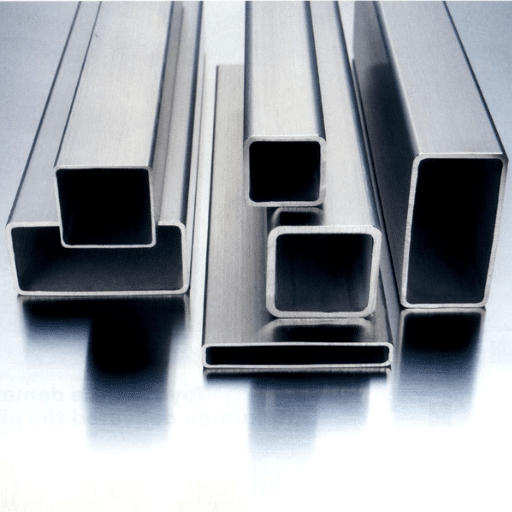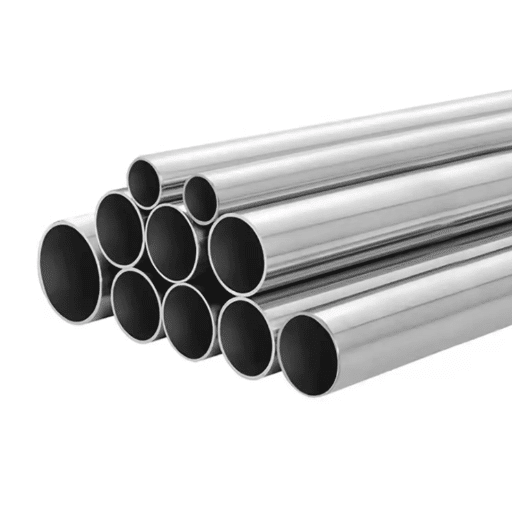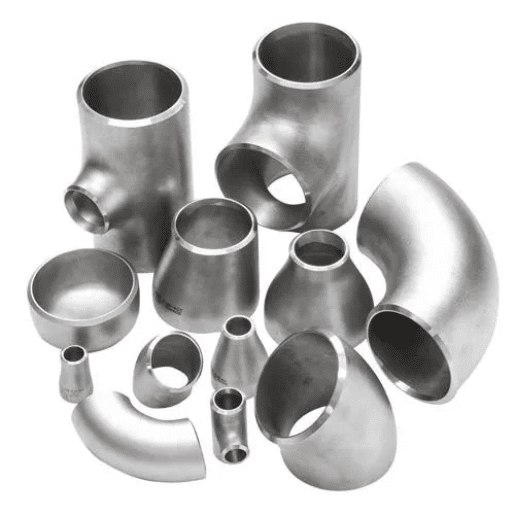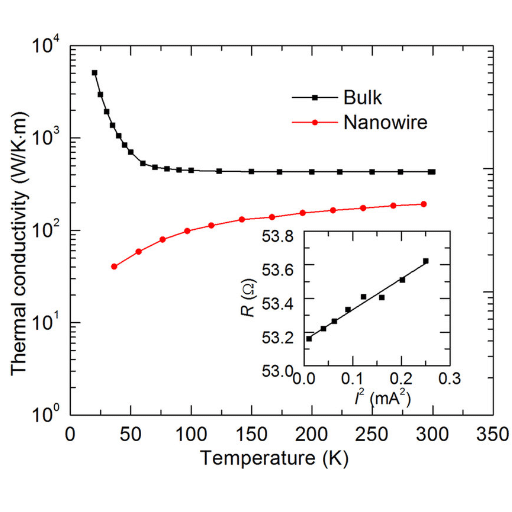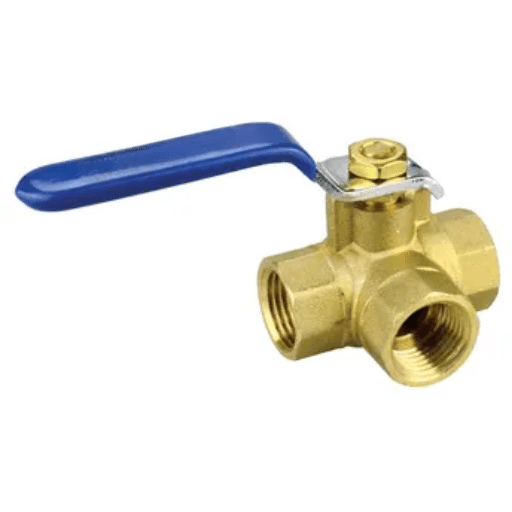Your Complete Guide to Hygienic Piping Solutions for Critical Industries
Sanitary pipes are of critical importance in industries where cleanliness, durability, and efficiency cannot be compromised. In the food and beverage industry, pharmaceuticals, and high-technology processes, stainless steel sanitary tubes play a vital role in maintaining hygiene and performance. This comprehensive guide explores the specifications and applications of stainless steel sanitary tubing, demonstrating why it’s the preferred choice for safety and quality-focused industries.
Introduction to Sanitary Tubing

The term “sanitary tube” refers to specialized tubing designed specifically for sectors where cleanliness is vital, such as food handling, pharmaceuticals, and medical applications. These tubes are engineered to provide safe and effective transportation of fluids or gases without contamination.
Definition and Importance of Sanitary Tubing
Sanitary tubing is widely used where hygiene and safety are paramount priorities. This includes food and beverage technology, pharmaceutical, and biotechnological sectors. These tubes are specifically prepared to withstand sanitary demands and transport materials without compromising safety.
Key Features:
- High-grade stainless steel construction for superior corrosion resistance
- Smooth internal surfaces that minimize bacterial accumulation
- Easy to clean and maintain for optimal hygiene standards
- Compliance with industry regulations including FDA and GMP standards
Applications in Various Industries
🍎 Food and Beverage
Sanitary tubes enable clean and safe processing of liquids like juices and milk. Stainless steel tubing is widely used in dairy production, providing excellent barriers to bacterial growth while meeting strict food hygiene requirements.
💊 Pharmaceutical
Medicine and vaccine production requires sterile environments dependent on sanitary tubing. Stainless steel and specialized polymers prevent microbial contamination and satisfy FDA and GMP codes of conduct.
🧬 Biotechnology
Sanitary tubing provides essential functionality during fermentation and culture operations. Strict cleansing procedures help these tubes keep impurities away from delicate biological substances.
🧴 Cosmetics and Personal Care
Industries manufacturing cosmetics, lotions, and personal care products require sanitary tubing for transportation and mixing of raw materials without contamination risks, ensuring safe, high-quality finished products.
⚗️ Chemical Processing
In the chemical industry, sanitary tubing transports corrosive and fragile materials requiring precise control. Its robust construction resists corrosion while maintaining chemical purity.
Key Materials Used in Sanitary Tubing
Sanitary tubes are manufactured from materials that are durable, corrosion-resistant, and appropriate for sanitary applications. The choice of material depends on the specific requirements of each industry and application.
| Material | Properties | Common Applications |
|---|---|---|
| Stainless Steel 304/316 | Excellent corrosion resistance, high strength, easy to polish | Food processing, pharmaceutical manufacturing |
| PTFE/Plastics | Flexible, non-reactive to chemicals | Chemical handling, specialty applications |
| Hastelloy | Extreme corrosion resistance | Harsh chemical environments |
| Titanium | Lightweight, exceptional strength, thermal resistance | Extreme temperature/pressure applications |
💡 Industry Insight: Stainless steel grades 304 and 316 are most commonly used due to their optimal balance of corrosion resistance, strength, and cost-effectiveness. The material science continues to evolve, making sanitary tubing increasingly capable of meeting exacting industry demands.
Stainless Steel Sanitary Tubes
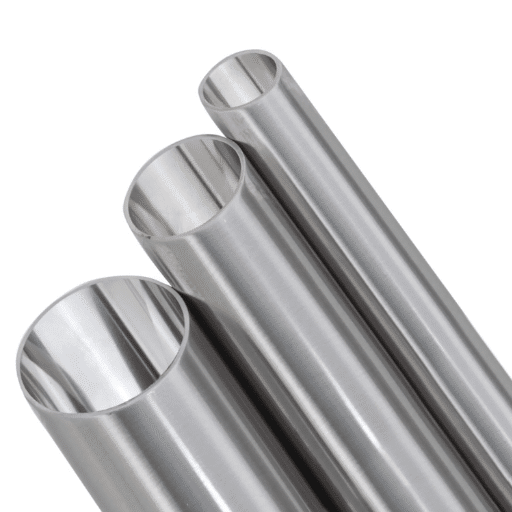
Stainless steel sanitary tubes are renowned for their corrosion-free performance and robust construction, making them invaluable across multiple industries. Food processing, pharmaceuticals, and biotechnology sectors extensively use these tubes due to their hygienic structural characteristics.
Benefits of Stainless Steel in Sanitary Applications
🛡️ Corrosion Resistance
Excellent resistance to water, chemicals, and varying temperatures extends service life and reduces maintenance costs in demanding environments.
✨ Sanitary Finish
Smooth, non-porous surfaces allow easy cleaning and disinfection, preventing bacterial infestation and maintaining appropriate hygiene levels.
🔥 Heat Resistance
Maintains structural strength and properties in extreme temperatures, from high-heat cooking processes to cryogenic applications.
💪 Strength and Durability
Withstands heavy-use applications without chipping, cracking, or losing form, ideal for long-term use in harsh conditions.
♻️ Environmentally Friendly and Recyclable
Completely recyclable material with long lifespan reduces waste generation and replacement frequency, supporting sustainable industrial practices.
Common Specifications: ASTM A270 and ASTM A269
Understanding the differences between these two key specifications is crucial for selecting the appropriate tubing for your application.
ASTM A270
Primary Use: Sanitary applications in dairy, food, beverage, and pharmaceutical industries
Key Features:
- Strict hygienic requirements
- Enhanced corrosion resistance
- Superior surface smoothness
- Designed for product contact
Best For: Applications requiring the highest sanitary standards
ASTM A269
Primary Use: General industrial stainless steel tubing applications
Key Features:
- Focus on mechanical properties
- Good corrosion resistance
- Standard industrial finish
- Versatile applications
Best For: Heat exchangers, instrumentation, and general industrial use
Understanding Tube OD and Wall Thickness
The outer diameter (OD) and wall thickness are critical design parameters that determine the strength, durability, and performance of sanitary tubing.
| Parameter | Description | Impact on Performance |
|---|---|---|
| Outer Diameter (OD) | External width of the tube | Determines fitting compatibility and flow capacity |
| Wall Thickness | Distance from center to perimeter | Affects pressure rating and structural integrity |
| Thick Walls | Greater material thickness | Higher pressure ratings, extended service life |
| Thin Walls | Reduced material thickness | Suitable for lower pressure applications, more economical |
✅ Industry Trend: Recent developments show an upward trend toward more precise tubes with tighter OD and wall thickness tolerances, particularly in pharmaceutical, food, and aviation industries where precision is paramount.
Welding and Fitting Techniques
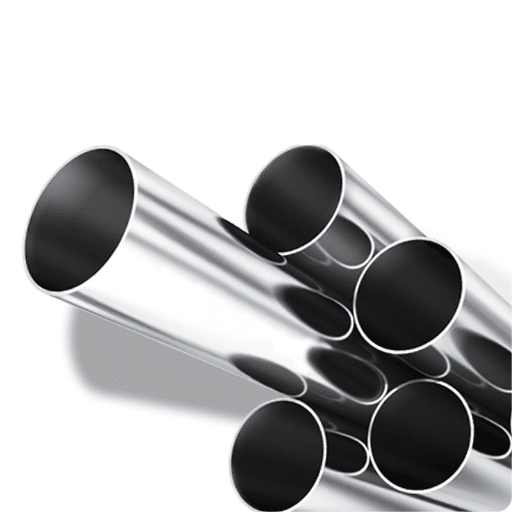
Proper welding and fitting techniques are essential for ensuring durability, safety, and performance in sanitary tubing systems, especially in pharmaceuticals, food processing, and aerospace applications.
Weld Types for Stainless Steel Sanitary Tubing
🔧 TIG Welding
Tungsten Inert Gas Welding
Advantages:
- Produces clean, high-standard welds
- Minimal contamination
- Ideal for thin-walled tubing
- No material distortion
Best For: Food, beverage, and pharmaceutical industries requiring hygienic applications
⚙️ Orbital Welding
Automated Precision Welding
Advantages:
- Highly automated and consistent
- Eliminates manual errors
- Perfect for repetitive welds
- Sealed environment ensures purity
Best For: Large-volume production requiring exacting standards and repeatability
Importance of Proper Fitting and Ferrules
Fittings and ferrules are critical components that ensure leak-free, contamination-resistant connections in sanitary piping systems.
Key Fitting Components:
- Sanitary Tube Valves: Control flow while maintaining hygiene standards
- End Caps: Seal tube ends to prevent contamination
- Spools: Connect tube sections with secure, leak-proof joints
- Ferrules: Provide compression and sealing for secure connections
Clamp Systems for Secure Connections
Clamping systems are essential for ensuring safe, sanitary, and reliable connections that prevent leaks, contamination, and production losses.
| Feature | Benefit |
|---|---|
| High-Quality Stainless Steel | Ensures durability and corrosion resistance |
| Precision Design | Meets stringent regulatory standards |
| Quick Release Features | Reduces maintenance time and downtime |
| Leak-Proof Sealing | Prevents contamination and product loss |
Polishing and Surface Finish
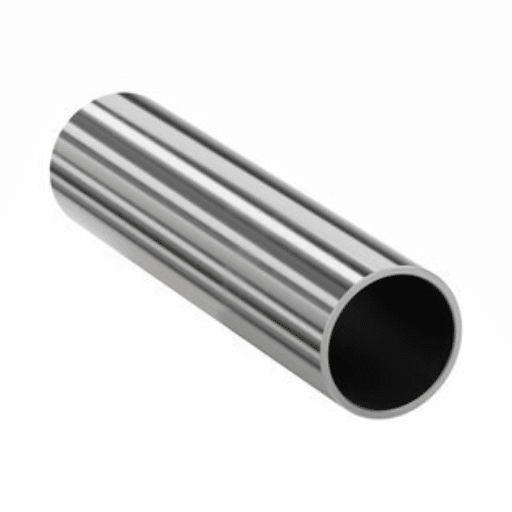
Surface finish quality is critical for sanitary tubing, directly impacting cleanliness, bacterial resistance, and long-term performance. Polishing processes create smooth surfaces that are essential for maintaining hygiene standards.
Differences Between Polished and Unpolished Tubing
✨ Polished Tubing
Surface Treatment: Extensive grinding and buffing
Characteristics:
- Smooth, reflective surface
- Minimal surface recesses
- Prevents bacterial buildup
- Enhanced corrosion resistance
Applications:
- Food and beverage processing
- Pharmaceutical manufacturing
- Biotechnology operations
- High-hygiene environments
⚙️ Unpolished Tubing
Surface Treatment: Raw, untreated surfaces
Characteristics:
- Lower cost option
- Standard industrial finish
- Adequate for non-critical applications
- No aesthetic enhancement
Applications:
- Structural applications
- Low-pressure systems
- Non-sanitary environments
- Cost-sensitive projects
Achieving 20RA Finish for Hygiene Standards
A 20RA (Roughness Average) surface finish represents one of the highest standards in sanitary tubing, with an arithmetic surface roughness value of 20 microinches. This ultra-smooth finish is critical for industries with stringent hygiene requirements.
🔬 Technical Requirements for 20RA Finish:
- Material Selection: High-grade stainless steel (typically 316L) for optimal polishing results
- Mechanical Polishing: Multiple stages using progressively finer abrasives
- Electropolishing: Final step removes surface irregularities and micro-peaks
- Quality Verification: Measured with profilometers to ensure compliance
- Standards Compliance: Meets ASME BPE and other industry specifications
| Surface Finish | Ra Value (microinches) | Typical Applications |
|---|---|---|
| Ultra-Fine (20RA) | 20 or less | Pharmaceutical, biotech, high-purity applications |
| Sanitary (32RA) | 32 | Food and beverage, dairy processing |
| Standard Polish | 50-100 | General industrial, cosmetics |
| Mechanical Finish | 150+ | Non-sanitary, structural applications |
Corrosion Resistance and Maintenance
Proper maintenance is essential for preserving the corrosion resistance of stainless steel sanitary tubing, especially in environments with moisture, chemicals, or extreme temperatures.
🧼 Regular Cleaning
Use soft materials and avoid harsh cleaning agents to prevent surface damage
🔍 Frequent Monitoring
Regular inspections catch damage early before situations worsen
🛡️ Protective Measures
Passivation and electropolishing extend protection and performance
⚠️ Maintenance Best Practices: Passivation treatments and regular electropolishing significantly reduce pitting and crevice corrosion. Maintaining material standards and preventive maintenance disciplines maximizes system uptime and postpones costly replacements.
Sanitary Tubing in Specific Industries
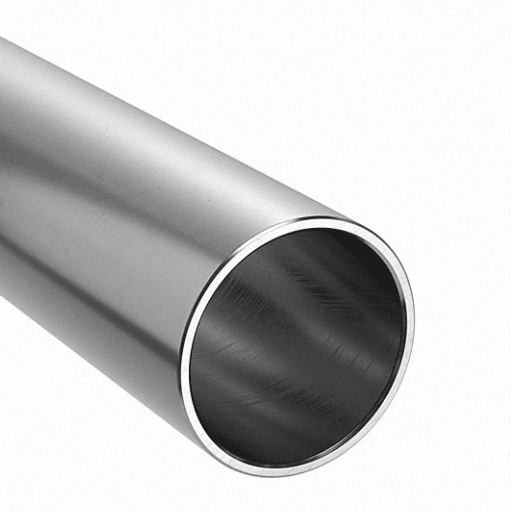
Sanitary tubing serves as the foundation for production in multiple industries where strict health and safety policies are paramount. The following sections explore key applications across different sectors.
Sanitary Tubing in the Beverage Industry
The beverage industry cannot function without sanitary tubing, where hygiene and quality standards are closely monitored. Recent search trends show increasing interest in “stainless steel sanitary tube” solutions, reflecting the industry’s commitment to safe, efficient production methods.
Key Applications in Beverage Production:
- Juice Processing: Safe transportation maintaining product freshness and nutritional value
- Soft Drink Manufacturing: Hygienic transfer of carbonated beverages without contamination
- Alcoholic Beverage Production: Clean handling of beer, wine, and spirits during fermentation and packaging
- Dairy Beverages: Transport of milk-based drinks with strict bacterial control
Applications in Pharmaceutical Manufacturing
The pharmaceutical industry relies heavily on sanitary tubing for sterile production environments where contamination risks must be eliminated entirely.
| Application | Purpose | Critical Requirements |
|---|---|---|
| Fluid Pharmaceutical Transfer | Transport of IV fluids, syrups, vaccines | Zero contamination, sterile surfaces |
| Purified Water Systems | Distribution of WFI (Water For Injection) | Ultra-pure standards, no leaching |
| Fermentation Processes | Production of antibiotics, enzymes, probiotics | Microbe-free environment, smooth surfaces |
| Bioreactor Fluid Transfer | Cell culture and protein production | Contamination prevention at all stages |
| CIP (Clean-In-Place) Systems | Automated cleaning procedures | Consistent hygiene, regulatory compliance |
✅ Regulatory Compliance: All pharmaceutical applications must meet FDA and GMP standards, making high-grade sanitary tubing with electropolished surfaces absolutely essential for safety and efficacy.
Utilization in Dairy Processing
The dairy sector represents one of the largest users of sanitary tubing, where product safety and quality preservation are critical from farm to consumer.
🥛 Primary Functions
- Safe milk transportation
- Cream processing
- Yogurt production
- Cheese manufacturing
- Product pasteurization
🔧 Key Features
- CIP system compatibility
- Reduced downtime
- Enhanced productivity
- Microbial inhibition
- FDA & ISO compliance
💡 Recent Industry Trends:
Modern dairy operations increasingly utilize high-grade stainless steel tubing with electropolished surfaces. This trend ensures corrosion resistance while inhibiting microorganism growth, making compliance with stringent food safety standards like FDA and ISO requirements more achievable and sustainable.
References
-
Sanitary Fittings and Tubing for Food Processors (Oklahoma State University Extension)
This resource discusses the use of stainless steel sanitary tubing in food processing, highlighting its corrosion resistance and durability.
Read more here -
Sanitary Fittings and Tubing for Food Processors (PDF, Oklahoma State University)
This detailed document provides specifications for sanitary tubing, including dimensions and material properties.
Read more here -
Sanitary Waste and Vent Piping (Michigan State University)
This document includes information on sanitary piping systems, materials, and fittings used in building infrastructure.
Read more here
Frequently Asked Questions (FAQ)
What exactly is a sanitary tube, and where is it applicable?
A sanitary tube is a type of pipe that is mainly used in industries that emphasize hygiene in their operation such as the food and beverage industry, pharmaceutical industry, and the dairy industry. These tubes are produced in such a way that the hygiene of the product remains uncompromised and there is no risk of contamination during preparation, processing and storage. They are commonly manufactured from materials such as sanitary stainless steel which resists corrosion very well hence easy to clean.
In what sanitary tubing sizes are available?
Different sanitary tubing sizes are available in order to fit different uses and systems. The available sizes include standard and non standard sizes’ diameters usually expressed in inches. Depending on the way by which the system is set up, a user can decide to use any of the tubing available which meets ASTM A270 Standard and any applicable 3A sanitary standard.
What does ASTM A270 mean in sanitary stainless steel tubes?
One of the important aspects of the ASTM A270 specification is the provision of requirements for sanitary stainless steel tubes for the food and beverages, pharmaceutic, and dairies. The scale of specifications varies, depending on the tube of manufacture such as: chemical properties, mechanical, surface finishing, etc., all of which ensure that such tubes are made for the purpose of sanitation.
Would you please explain any advantages of BPE tubes in sanitary systems?
Also referred to as BPE tube – Bioprocessing Equipment tube – is one that is adaptable to the high standards of the biopharmaceutical industry. It is intended for use at all times where purity and sterility are required. A BPE copper tube has a specific characteristic of a mechanical finish on its internal surface, thereby allowing wash out easily those regions and avoiding any built formation of colonies.
Which sanitary tube fittings provide the most options for sanitary tubes?
Fittings such as sanitary tube valve, end cap, and spool are very important in piping systems. Each fitting comes with a design which ensures that it fits in properly and there are no leaks, and they are normally made from materials that can withstand contamination of food products such as stainless steel.
Why is Bright Annealed Finished Tubing important in sanitary applications?
Bright annealing is a metallurgical operation to improve the finish of the surfaces of sanitary tubes. It is not only beneficial in making the appearance better but also maxims out the bellows corrosion resistance for the user. Such an extra thermal treatment is called bright annealing, which is a practice that all welding companies have that makes the surfaces of tubes smooth and shiny.
What criteria should I use to choose the sanitary tubing for my purpose?
The correct choice for a type of sanitary tube depends on several considerations including, but not limited to, the material (for instance, 304 stainless steel), the size, and the extent of ASTM and ASME standards compliance. It is essential not to leave out examining the particular needs of the application such as temperature, pressure, and the type of fluid that will be transported. Furthermore, engaging suppliers with superior stocks of tubing products can also be beneficial because it ensures that only the best will be considered.
What Tests Are Used to Inspect Sanitary Tubes?
Quality control of sanitary tubing is typically addressed via several testing techniques such as eddy current and hydrostatic tests. Such testing methods are meant to enhance safety by checking whether the tubes maintain integrity or performance, which would reduce the risk of failure. There also is the possibility of marking equipment – tubing to be more specific – with the diameter and heat number for traceability and meeting requirements for sanitary standards.
Is it possible to get sanitary tube with both end option s?
Yes, they can be found with both these options in many online and offline stores offering sanitary tubes. The difference with cut tubing is that people are able to work with tubings to create forms and pieces that are specific to the sanitation installation project. Therefore, one can easily get any sanitary tube in fittings and lengths that they need.

